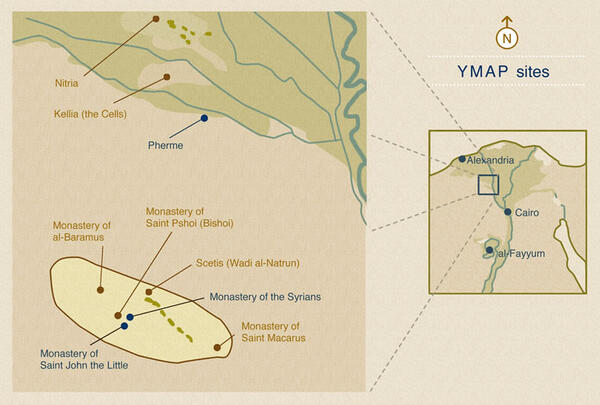Yale Monastic Archaeology Project North (YMAP-North)
Yale’s archaeological work in northern Egypt has involved the excavation, documentation, and conservation of Christian monastic remains in the desert west of the Nile Delta.
Begun in 2006, the Yale Monastic Archaeology Project North has focused on monastic remains in the Nile Delta and Wādī al-Naṭrūn. Ten seasons of on-site work have been completed (2006–2014 and 2017), with Prof. Stephen J. Davis serving as the founding principal investigator/executive director, and Darlene Brooks Hedstrom (2006–2010) and Gillian Pyke (2010–present) serving as archaeological directors. This work has been made possible by grants from the William K. and Marilyn M. Simpson Endowment for Egyptology at Yale University, with additional early support from the National Geographic Society, Dumbarton Oaks (Harvard University), and Columbia University.
A primary focus of YMAP-North has been the Monastery of John the Little in Wādī al-Naṭrūn (ancient Scetis). Vast in extent (over seven square kilometers in area), the archaeological site contains around eighty unexcavated architectural structures, which have been subject to threats of agricultural encroachment and human vandalism. During their seasons in the field, the project partnered with the Egyptian Supreme Council of Antiquities to document these valuable remains and to preserve them for future generations.
In 2006, the YMAP team began with a series of geophysical and archaeological surveys at the monastic site of Pherme in the western Delta, before shifting its attention to the Monastery of John the Little that same year, where a monastic midden (trash deposit) was excavated. Beginning in 2007, the excavations at John the Little were expanded to include a large, well-preserved monastic residence, measuring approximately 25 x 25 meters. This structure features a distinctive mud-brick architecture, kitchen installations, and a large room with an extensive program of figural wall paintings and numerous Coptic dipinti (painted inscriptions). Excavation of the residence was completed in 2012, and in subsequent years the team conducted a series of study seasons for the analysis of finds, concluding in 2017. Multiple volumes documenting the architecture and small finds, pottery, plaster, visual and textual culture (including both art and inscriptions), and organic materials are currently in preparation for the Yale Egyptological Publications (YEP) series.

